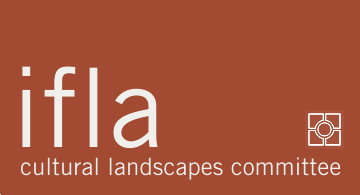basics > definitions
UNESCO World Heritage Cultural landscapes Definitions
Cultural landscapes are the combined products of the interaction of people and nature. They were categorized by UNESCO World Heritage as defined, evolved and associative. The most easily identifiable is the Clearly Defined Landscape designed and created intentionally by a single person or a group. This embraces garden and parkland landscapes constructed for aesthetic reasons which are often (but not always) associated with religious or other monumental buildings and ensembles.
The second category is the organically evolved landscape. This results from an initial social, economic, administrative, and/or religious imperative and has developed its present form by association with and in response to its natural environment. Such landscapes reflect that process of evolution in their form and component features. The evolved landscape can be continuing to evolve as a living place or the evolutionary process has ceased and the landscape is in remnant form. These two sub-categories are:
- Relict Landscape or fossil landscape where the evolutionary process came to an end at some time in the past, either abruptly or over a period. Its significant distinguishing features are, however, still visible in material form.
- Continuing Landscape is one which retains an active social role in contemporary society closely associated with the traditional way of life, and in which the evolutionary process is still in progress. At the same time it exhibits significant material evidence of its evolution over time.
The Associative Cultural Landscape is a type that is linked to cultural traditions. The inclusion of such landscapes on the World Heritage List is justifiable by virtue of the powerful religious, artistic or cultural associations of the natural element rather than material cultural evidence, which may be insignificant or even absent. The associative cultural landscape is the physical place where intangible aspects of cultural heritage are embodied.
Examples of each type of cultural landscape are inscribed on the World Heritage List. Since 1992, with the acceptance of these definitions and the ability to inscribe cultural landscapes, there have been 60 cultural landscapes of outstanding universal value to all of humanity inscribed as a shared global heritage. Cultural landscapes are places of heritage value. Geologically diverse cultural landscapes are a rich array of local, regional and global heritage resources. For example:
- Sacred groves in Ghana that foster traditional medicine and preserve biodiversity date to early peoples
- Seashore villages that express the interdependence of the sea and the community in ways of life, craft, work, settlement pattern, land uses and scale example—Norway? Nova Scotia
- Egyptian and Chinese tomb site planning, layout , earth forms and structures are ancient designed landscape
- Modern gardens of globally important landscape architect Roberto Burle Marx date to the twentieth century
- The sacred mountain of the New Zealand Maori peoples is associated with spiritual beliefs
These cultural landscape definitions and examples aid us in forging a shared language for all those who participate in the IFLA CLC. We use the UNESCO World Heritage definitions as these are a global terminology in use since 1992 which has been tested and widely applied. The diverse legacy of cultural landscapes that our generation has inherited can be passed on to the next and future generations with the support of knowledgeable, experienced landscape architects. The evolution of professional practice addressing cultural landscapes varies in each country and with each group of people.
We can, through the IFLA CLC share our expertise, learn from each other and shape emerging practice toward the preservation and stewardship of cultural landscapes.

UNESCO World Heritage Cultural Landscapes Definitions
World Heritage Operational Guidelines 2005, Annex 3
At a time of increasing globalization, the protection, conservation, interpretation and presentation of the heritage and cultural diversity of any particular place or region is an important challenge for people everywhere.
International Cultural Tourism Charter, 1999

